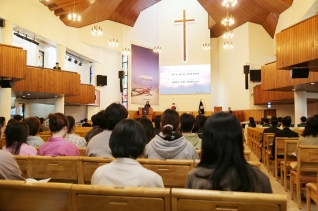
(Photo : Medill News21/Flickr/CC) Megachurches are growing, weekly attendance is down, but at the same time the big churches are increasingly segregating into smaller groups with diversified services.
A new study shows that even though megachurch attendance has grown in America since 2009, many in the congregations are attending the churches less frequently.
The survey has been conducted by Hartford Institute and Leadership Network every five years since 2000, and the last one was done on 209 Protestant churches with over 2,000 members between 2009 and 2014.
During these five years, 13 percent of megachurches reported that their attendance grew by 100 percent or more, 19 percent said the growth of members was between 50 and 99 percent, while another 39 percent recorded a 10 to 49 percent growth.
"Last weekend one in 10 adults and children who went to a Protestant church went to a megachurch - about 5 million people," Warren Bird of Leadership Network and co-author of the study, was quoted as saying by Religion News Service.
However, the megachurches do not appear to be attracting frequent attendance, where the 'regular' attendees go to church only about once or twice a month.
"We found many of these large, successful congregations still have many of the same challenges of smaller congregations. They are not immune to the cultural dynamics in society. Everyone is trying to attract new people and hold on to them and make them disciples. But, today, people are seekers and shoppers looking for a temporary experience of worship, not a long-term commitment," Thumma added.
The number of weekly attendance declined by 14 percent in the last five years. The median weekly attendance in megachurches was 3,800 in 2010 but in 2014, it dropped to about 2,696, according to the survey.
Amid the dismal trend, several healthy movements appeared to be emerging, one of them being that megachurches are being increasingly building more and smaller campuses. The churches are "getting bigger by getting smaller," according to Bird.
Prior to 2009, only about 46 percent megachurches were branched off in multiple smaller campuses, but in the recent survey that number increased to about 62 percent.
Denominational ties are increasingly being seen as less important, and the pastors are giving more importance to serving people outside their assemblies, according to the survey.
Thumma told the Religion News Service that "for a very long time the focus of megachurch programming was inward - taking care of our own people. Now there's a huge shift to outreach: 43 percent said global missions were a specialty of their congregations, and 44 percent said one of their specialties was community service and helping those in need."
About 30 percent of the megachurches offer online 'campuses' serving a median of 300 people on a weekly basis. Half of them started such internet outreach projects in 2012 or later. Another 18 percent of megachurches are known to have been considering this approach, the study says.
As many as 81 percent of the megachurches place special importance on global mission programs, while donations to foreign missions has increased from 10 percent to 14 percent since 2008.
Focus on community services has also risen about 7 percent from 74 percent in 2010 to 81 percent in 2015.



























































